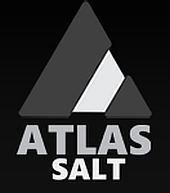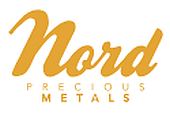 Nord Precious receives $200k in funding for Timiskaming
Nord Precious receives $200k in funding for Timiskaming
2025-06-23 18:44 ET – News Release
Mr. Frank Basa reports
NORD PRECIOUS METALS SECURES MICA INVESTMENT TO SCALE CRITICAL MINERALS PRODUCTION FROM TAILINGS
Nord Precious Metals Mining Inc. has secured $200,000 in funding from the Mining Innovation Commercialization Accelerator network to advance its Re-2Ox technology from technology readiness Level 6 to TRL 7, positioning the system for commercial deployment and licensing opportunities.
The funding, part of MICA’s fourth call for proposals announced on June 15 in Toronto, will support a 1,000-hour pilot demonstration at Nord’s Temiskaming testing labs facility in Cobalt, Ont. This real-world operational environment will generate the performance data required to bridge what the industry terms the valley of death — the critical transition from validated technology to commercial viability.
“The mining sector has a fundamental arsenic problem that constrains global mineral processing capacity,” said Frank J. Basa, BEng, chief executive officer of Nord Precious Metals. “Current solutions either avoid arsenic-bearing feeds entirely or incur prohibitive disposal costs. Re-2Ox is able to process arsenic-bearing feeds and represents a paradigm shift by transforming a substantial per-tonne liability into a margin-positive operation while recovering critical minerals essential to the energy transition.”
Market opportunity and technology differentiation
Nord’s technology addresses a substantial and growing market opportunity:
- Total addressable market: 282 billion tonnes of global tailings inventory, with continuous additions from active operations amounting to another 14 billion annually;
- Serviceable addressable market: a sizable share of global tailings carries arsenic; legacy plants sidestepped it for safety and permitting reasons, which is precisely the niche Re-2Ox is built to serve;
- Serviceable obtainable market: initial focus on an estimated 18 million tonnes within Ontario’s Cobalt camp, with Nord controlling several tailings piles through its properties in the region.
The Re-2Ox process achieves what incumbent technologies cannot: economic processing of high-arsenic feeds with simultaneous recovery of silver, cobalt, nickel and manganese. Key performance metrics include:
- Arsenic capture: 99 per cent as stable scorodite/copper-arsenate;
- Energy consumption: 80-per-cent reduction versus pyrometallurgical processing;
- Modular design: 40-foot shipping container format enabling rapid scaling.
Strategic alignment with critical infrastructure needs
The MICA investment validates Nord’s approach to addressing multiple policy imperatives simultaneously.
As noted by MICA network director Chamirai Charles Nyabeze, “Supporting SMEs is not only vital for our economy, [but] it is essential for accelerating the energy transition globally.”
Nord’s integrated processing model leverages existing TTL infrastructure — the district’s only permitted mineral processing facility — while offering multiple commercialization pathways:
- Direct operations: initial pilot demonstration scaling to commercial modules;
- Technology licensing: post-TRL 7 validation enables global deployment through equipment leasing and royalty structures;
- Toll processing: immediate revenue generation from third party feeds requiring arsenic remediation.
Technical validation and commercial readiness
The transition to TRL 7 represents a critical inflection point. SGS Lakefield’s independent validation, working in tandem with MICA’s endorsement, will provide the technical foundation for:
- Equipment financing partnerships;
- Offtake agreements with metal traders;
- Flow-through financing for critical mineral production;
- Specialized grant programs requiring third party verification.
Previous bench-scale testing has demonstrated the process’s ability to produce:
- Battery-grade cobalt sulphate (22.6 per cent CoSO4-6H2O) meeting Tier 1 specifications;
- Silver recovery to dor;
- Nickel sulphate at 81-per-cent recovery;
- Stable arsenic disposal product passing regulatory leach tests.
“The 1,000-hour pilot at our TTL facility will demonstrate continuous operation in a production environment,” explained Mr. Basa. “This isn’t laboratory validation. It’s real-world proof of a technology that can be deployed globally wherever arsenic constrains mineral processing.”
Competitive landscape and market position
The Re-2Ox technology stands alone in addressing the industry’s most challenging feeds. Traditional pyrometallurgical smelters impose penalties or outright rejection for arsenic-bearing concentrates, while their fixed infrastructure requires massive capital investment and faces increasingly stringent emission regulations. These facilities are geographically constrained and cannot economically process lower-grade or complex feeds.
Emerging modular technologies from companies developing electrowinning and ion-exchange platforms have generated significant interest but uniformly require precleaned feeds with minimal arsenic content. These systems excel at producing high-purity metals from already-refined solutions but cannot handle the complex mineralogy typical of legacy tailings or refractory ores. The pretreatment required to prepare feeds for these technologies often negates their economic advantages.
Bioleaching approaches, while environmentally attractive, suffer from prohibitively slow kinetics and poor precious metal recovery. Residence times measured in weeks or months, combined with strict temperature and pH requirements, limit their application to niche operations with specific mineralogy and climate conditions.
Re-2Ox’s containerized design enables deployment at any site with basic infrastructure — power, water and road access. The closed-loop chemistry eliminates liquid discharge while producing stable, saleable arsenic products rather than hazardous waste requiring perpetual management. This combination of mobility, environmental compliance and multimetal recovery creates a unique value proposition for mining operations worldwide.
“We’re not competing with existing technologies. We’re addressing the feeds they can’t or won’t process,” noted Mr. Basa. “Every tonne of high-arsenic material that conventional processors reject becomes our opportunity. With proven chemistry, validated economics and a deployment model that minimizes capital risk, Re-2Ox is positioned to unlock value from resources the industry has written off.”
Path to commercialization
With recovery permit submission scheduled for July 1, 2025, under Ontario’s streamlined 80-day review process, Nord anticipates:
- Pilot commissioning and operational data collection in late 2025;
- SGS validation report and commercial module financing in early 2026;
- First commercial deployment mid-2026;
- Global rollout targeting multiple operational modules across key mining jurisdictions.
Douglas Morrison, president and chief executive officer of CEMI and mining adviser to MICA, emphasized the broader implications: “CEMI’s role is to ensure that innovation doesn’t stop in the lab. It must progress to the mine site where it can increase productivity, reduce environmental impact and strengthen our global competitiveness.”
For Nord, that progression represents both immediate revenue opportunity and long-term technology licensing potential across a global market measured in hundreds of billions of tonnes of stranded value.
Qualified person
The technical information in this news release was approved and prepared under the supervision of Frank J. Basa, BEng, (PEO), director of Nord Precious Metals, a qualified person in accordance with National Instrument 43-101.
About Nord Precious Metals Mining Inc.
Nord Precious operates the only permitted high-grade milling facility in the historic Cobalt camp of Ontario, where the company has established a unique position integrating high-grade silver discovery with strategic metal recovery operations. The company’s flagship Castle property encompasses 63 square kilometres of exploration ground and the past-producing Castle mine, complemented by the Castle East discovery where drilling has delineated 7.56 million ounces of silver in inferred resources grading an average of 8,582 grams per tonne silver (250.2 ounces per ton) in 27,400 tonnes of material from two sections (1A and 1B) of the Castle East Robinson zone, beginning at a vertical depth of approximately 400 metres. Note that mineral resources that are not mineral reserves do not have demonstrated economic viability. Please refer to the Nord Precious Metals press release dated May 27, 2020, for the resource estimate.
Nord’s integrated processing strategy leverages the synergistic value of multiple metals. High-grade silver recovery supports the economics of extracting critical minerals, including cobalt, nickel and other battery metals, while the company’s proprietary Re-2Ox hydrometallurgical process enables production of technical-grade cobalt sulphate and nickel-manganese-cobalt formulations. This multimetal approach, combined with established infrastructure, including TTL Laboratories and underground mine access, positions Nord to capitalize on both precious metal markets and the growing demand for battery materials.
We seek Safe Harbor.
https://www.nordpreciousmetals.com/



























